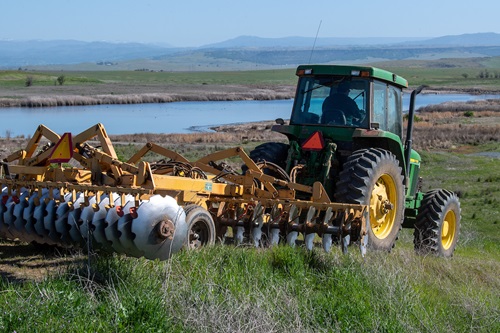The state will likely soon be offering up more cash to farmers who take their crops out of production. The state Department of Water Resources’ (DWR) new LandFlex program will pay out $25 million to local agencies and ultimately, as an incentive to farmers.
This is different from the Multibenefit Land Repurposing program overseen by the state’s Conservation Department.
The LandFlex program’s main goal is to relieve at-risk domestic wells from surrounding groundwater pumping.
Farmers in the San Joaquin Valley have relied more heavily on groundwater as surface water supplies from the Sacramento-San Joaquin Delta have dwindled for environmental needs and after multiple years of prolonged drought. As a result, aquifer levels plummeted causing shallow domestic and community wells to go dry throughout the San Joaquin Valley. This year alone more than 1,000 wells went dry in the valley.
DWR has multiple drought programs and funding opportunities. But there was still a “gap,” said Kristopher Tjernell, deputy director of Integrated Watershed Management at DWR.
“And that gap was really looking at how can we address the demand conflicts between basically groundwater dependent agriculture that’s near these vulnerable wells, and the wells themself,” said Tjernell. “That’s the breach we’re jumping into with this program.”
Grants from LandFlex will go to groundwater sustainability agencies (GSA,) local agencies in charge of bringing groundwater to sustainable levels by 2040, in accordance with the state’s groundwater law.
To qualify, agencies must be in a critically overdrafted subbasin, have already instituted limits on groundwater pumping for growers and must have a high density of at-risk domestic wells.
Tjernell anticipates that the $25 million will be spread between two or three GSAs, meaning each agency will likely receive $7-$10 million. Tjernell estimated the program will help protect about 100 domestic wells.
The program will pay $450 for every acre foot of water kept in the ground through water year 2023. Most subbasins that have pumping limits in place are ramping those limits down over time. That means farmers are still overdrafting a certain amount. For those overdrafted amounts, the program will pay $750 per acre foot permanently eliminated.
The program will also pay an acreage fee to help transition fallowed land to less water intensive uses. Amounts vary based on crop:
- $250 per acre for row crops
- $2,000 per acre for dairy feed crops
- $2,800 per acre for orchards and vineyards
Water savings will be calculated using satellite evapotranspiration technology which can measure water usage by seeing how much water is output by plants.
“We’re definitely interested in the program,” said Stephanie Anagnoson, director of water and natural resources for Madera County. “It’s exciting that there’s money for people who have done the hard work of developing (pumping) allocations with penalties.”
The Madera County GSA, which Anagnoson oversees, covers land in that subbasin that is outside of water district boundaries. Growers in those areas rely almost exclusively on groundwater.
She said her staff will have to take a closer look at the LandFlex rules and that a few things will need to be hammered out first.
For one thing, a Dec. 6 temporary injunction has halted collection of a County GSA groundwater fee. Until that issue is resolved, the GSA does not have funding for any projects. Because the LandFlex program is reimbursement based, the injunction means the CountyGSA probably wouldn’t be able to participate yet.
Still, Anagnoson was happy about the program. Others echoed her enthusiasm.
“We’re pretty excited about this LandFlex opportunity,” said Mark Larsen, general manager of the Greater Kaweah GSA in Kings and Tulare counties. “We definitely are applying.”
The state’s other land fallowing program, the Multibenefit Land Repurposing Program, has proved very popular, receiving far more applications than its $90 million in funding could sustain. So far, that program has doled out $10 million grants to several agencies, including Madera County and Kaweah Delta Water Conservation District.
That will “help move the needle,” said Larsen. But it will only go so far, he added. This new program adds another layer of much needed funding, which will hopefully help to get significant fallowing underway, said Larsen.
The LandFlex program is currently in the public comment period which closes on December 29. There is a workshop for eligible applicants on January 19 and awards will be announced in late February.
Share this:
- Click to share on Facebook (Opens in new window)
- Click to share on Twitter (Opens in new window)
- Click to share on LinkedIn (Opens in new window)
- Click to share on Reddit (Opens in new window)
- Click to share on Tumblr (Opens in new window)
- Click to share on Pinterest (Opens in new window)
- Click to share on Pocket (Opens in new window)
- Click to share on Telegram (Opens in new window)
- Click to share on WhatsApp (Opens in new window)
- Click to print (Opens in new window)








